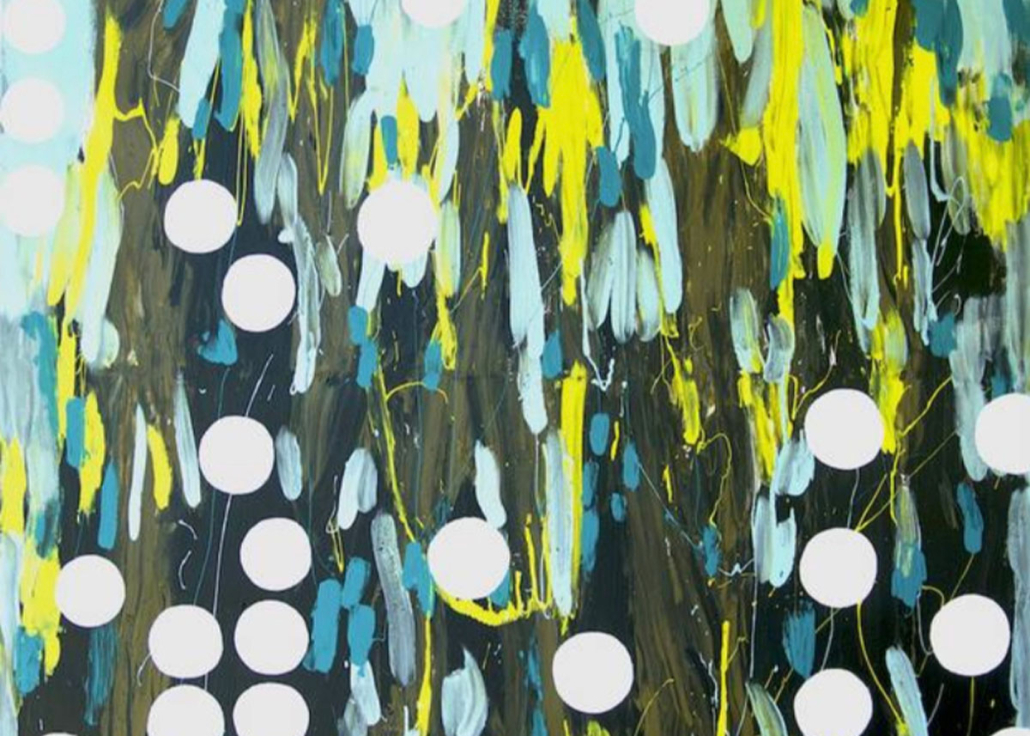Image: ‘Whitewash’ (detail) by Konstantina, acrylic on canvas, 2020.
‘Mission in Mark: marks of mission’
Alison Bleyerveen
Easter 2, Year B
Psalm 96; Mark 16:1-8
I don’t know if you are anything like me but talk of the mission of the church makes me profoundly uneasy. I feel this uneasiness in my body. It feels unsafe. It feels like I might be walking into a trap. These feelings are worth paying attention to, for “mission” has indeed been a dangerous and damaging thing off the tongue, and in the hands of the church.
The image you can see on the screen is the work of Kate Constantine. Konstantina, as she prefers to be known, is a Gadigal woman and artist whose work has been described as “painting her Gadigal people back into the narrative of Sydney’s history”. The image is called “Whitewash” (2020) and is part of a retrospective of her work brought together in the recently published book, Gadigal Ngura: Exploring a Gadigal Artist’s Love Affair with Her Country.
Konstantina writes of this image: “This is my reflection on the White missionary movement in Australia over-riding or ‘whitewashing’ the beauty of Aboriginal Culture and custom during the long years of Colonisation. I am feeling into this. Feeling for those who were taken, those who were moved to places that were foreign to them, those who were displaced, separated from family and oppressed … we still feel those effects today! This dislocation of people is Australia’s biggest shame.”
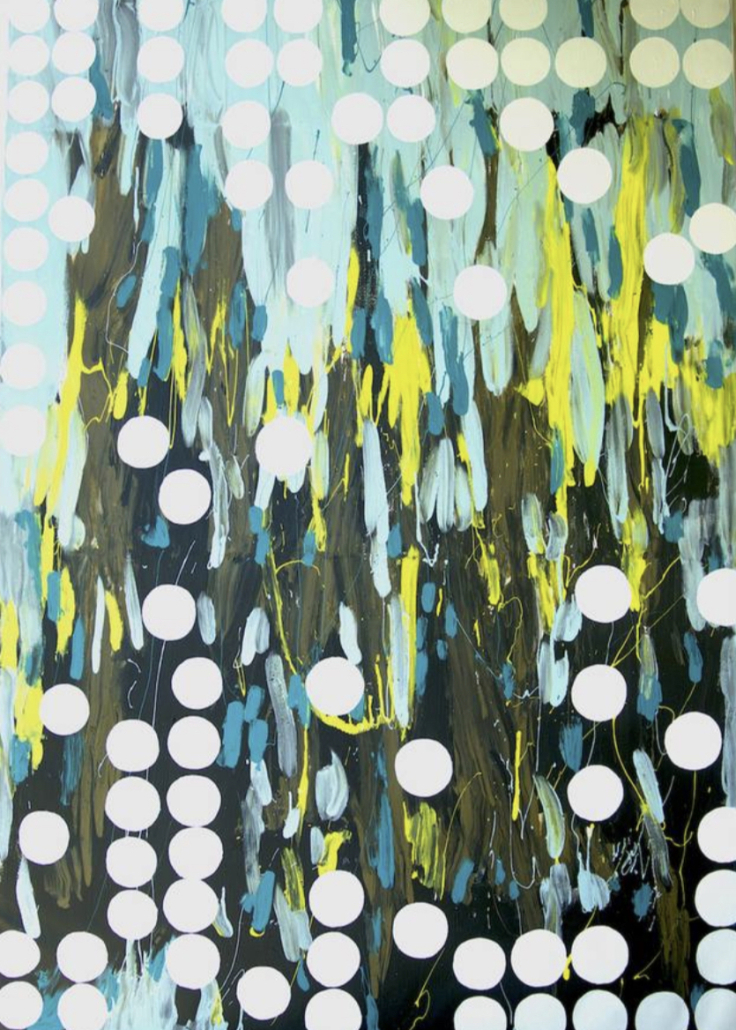
Image: ‘Whitewash’ by Konstantina, acrylic on canvas, 2020.
As Garry Worete Deverell, a Trawloolway man from Northern Tasmania, a priest and theologian, and currently living/sitting here on Gadigal land sums it up for us: “You [that’s us] took the lead in the attempted destruction of our spirituality, our way of life, especially during the mission period.”
The mission of the church has so often been framed in ways that have drawn sharp lines between us and them, shamed, excluded, and caused abiding harm. Some of us, sitting here, have felt that. The mission of the church has made claims on truth and right that seem far from the kin-dom of God that Jesus proclaimed.
Today we are making bold claims that the mission of the church is the mission of Christ. It’s an uneasy thing. Better that we might say that the mission of Christ has a woefully blind church.
Today we begin an intentional journey together, over the season of Easter this year, where we seek to be Easter people, missional people, and hoping to be shaped by the love of Jesus, in our place and work here in South Sydney and beyond. We will do this through the lens of Mark’s Gospel and understanding together the marks of the mission of God in the life, death and resurrection of Jesus Christ. Can these help us to redeem “mission” from its terrible history? I think there are a few signposts, and things we can carry in our backpacks as we go on this journey together.
In Mark, Jesus begins his ministry in Galilee. “The time has come,” he said. “The Kingdom of God has come near. Repent, and believe the good news”. The Kingdom of God has come near. This is the good news. This is the Gospel. But realising this begins not in belief and certainty, but in repentance.
Repentance also has a rap sheet a mile long, and has been used against people. As Jim Palmer writes, “the misteaching of what Jesus meant by repent has kept people circling around in that cosmos of false beliefs and mindsets that lead nowhere.” Nowhere pretty, nowhere near the Kin-dom, Kind-dom, at any rate. What the Greek word “metanoia” really implies is a complete transformation of our minds that will in turn change our hearts and actions. Meta means beyond. And noia means mind. Think of repentance as a call to realisation, beyond anything we have been formed body and mind to assume is true by our DNA, our families, our cultures, the ways we do things around here. I do think those are also a grace to us, but the kin-dom of God lies beyond all that. So near, and yet so far. The word mission is bound in Christian history and culture, bound to the colonisation of peoples, bound up with both the unexamined, and the arrogant and wilful attitudes that take shape in unjust policies, in legal statutes and behaviours that oppress and harm people and the places we live in.
The feminist theologian Sallie McFague has called sin “our refusal to accept our place”. The earth is our home, but we personally, are not its only residents. How then shall we live? Taking our place in the Kin-dom of God that Jesus exemplifies, begins in repentance. We might ask ourselves what it means to repent of being either too small or too large. We need to learn to take our place in history and in terms of the mission of God, far more humbly. We need to learn, as McFague writes, that what we see is only the backside of God. So much is hidden. There is always so much that lies before us. We might pray that we would have our eyes opened, that we might wake up, so that the so near kin-dom of God Jesus speaks of can become more of a reality amongst us. Some of us might need to step down from inherited power, and some may need to learn to step up.
In the stories of Jesus and people in Mark’s Gospel there is much talk of the blind learning to see, and of the need to wake up, and to pay attention to the signs of things. For some that is shaped as a turning away from abstractions and the power, entitlement and expectations of patriarchy and empire and towards loving, serving relationships. For some repentance needs to take the shape of relinquishing wealth, privilege, status and self-congratulation. For some it is a stepping up or forward, through fear, from silence, from exclusion to restored place in community in all the complexities of that.
I note that in Mark the ones who find and take up their place often need the practical help of friends. A roof dismantled, the quieting of demons, touch, lots of talking and storytelling, a challenge, wasteful extravagant unorthodox love, intelligence, faith, offering and receiving kindness.
All of this, in Galilee, which I think functions in the story as the place where we might find our place, with Jesus, who is gone before us. It strikes me that Galilee and Jesus going before us is a bookend to the start and the finish of Mark’s Gospel. I like the cliff hanger at the end of the story. The women at the tomb are told he is not here … we might think not here in this place of death, not here in this place of colonisation and cruel oppression, not even here in Jerusalem and the temple. He is not here but is gone ahead of you to Galilee. Galilee, where you first followed and loved him. Galilee, where your eyes were opened and your mind was blown, and you found your place with him and others. It’s a tricksy reversal. Asked in Galilee to wake up and to understand, but to keep the secret, the friends of Jesus are unable for it. They speak of what they haven’t yet understood. Now they hear: “Do not be alarmed, you are looking for Jesus of Nazareth, who was crucified. He has been raised. He is not here. Look there is the place they laid him. But go, tell his disciples and Peter that he is going before you to Galilee.” Now, the women understand all too well, and they are terrified and don’t do as asked, to go and tell. They keep silent. I think there is much to think on for us, as Easter people, in this story, as we seek our place in it.
I think Mark’s gospel leaves us with an invitation. He is not here but has gone ahead. We have a choice. Will we follow? Will we follow back to Galilee, to that hotbed of competing claims, and risky relationships and choices, and disappointments and challenges? Will we follow and find again the person of Christ and the work of sharing truthful, creative, poetic, uncovering stories, the teaching and learning, the wounded ones and the loving service that holds them, the roof-raising and table-turning that challenge unjust structures and make a way for those who are vulnerable, and find ourselves in the pouring out, costly, extravagant, subversive love and grace that we have been given … for a new anti-empire, kin-dom of God vision of found family. Will we bear these marks of Christ’s mission in our own bodies?
Will we learn to say and show that Christ’s mission has a church, more than the church has a mission? I want to resist the later additions to Mark’s Gospel that harness this too tightly to any kind of institutional agenda. And yet, we need to organise ourselves around that which has a call on us. One way of organising ourselves sees us in communion with the broader, global Anglican Church, and their ecumenical partners, including in some places the Uniting Church, who have codified the marks of Jesus’ mission as Tell, Teach, Tend, Transform and Treasure. These will be anchor points for us over the next weeks up to and including Pentecost.
In this Easter journey, where we at South Sydney seek the mission of Christ among us, we might ask for an ongoing prayerful repentance in the way we do things; we might wonder about our “Galilee”, our place, how we might be neither too much nor too little, and how Jesus goes before us there. We might commit ourselves anew to taking a communitarian journey of realisation, upheaval, love, repentance, redress, restoration … on repeat. On the streets of Redfern and Waterloo and beyond, and in the risky places, with our kin. Amen.
…
Easter 3B: Tell
I don’t know about you, but I find it hard to find an answer to a question, a question such as the one Jesus asks the disciples, “Who do you say that I am?” … or an instruction like Peter gives, “Give an account of the hope that is in you” … without a moment to gather my thoughts.
I don’t know about you, but I would find it very difficult to bear witness to the good news and my hope if I didn’t spend some time thinking about what I have actually witnessed, what I have seen and experienced, in a particular place at a particular time. Good news for me is contextual. It’s always anchored in place. It changes from time to time, and depending on who I’m with and listening to.
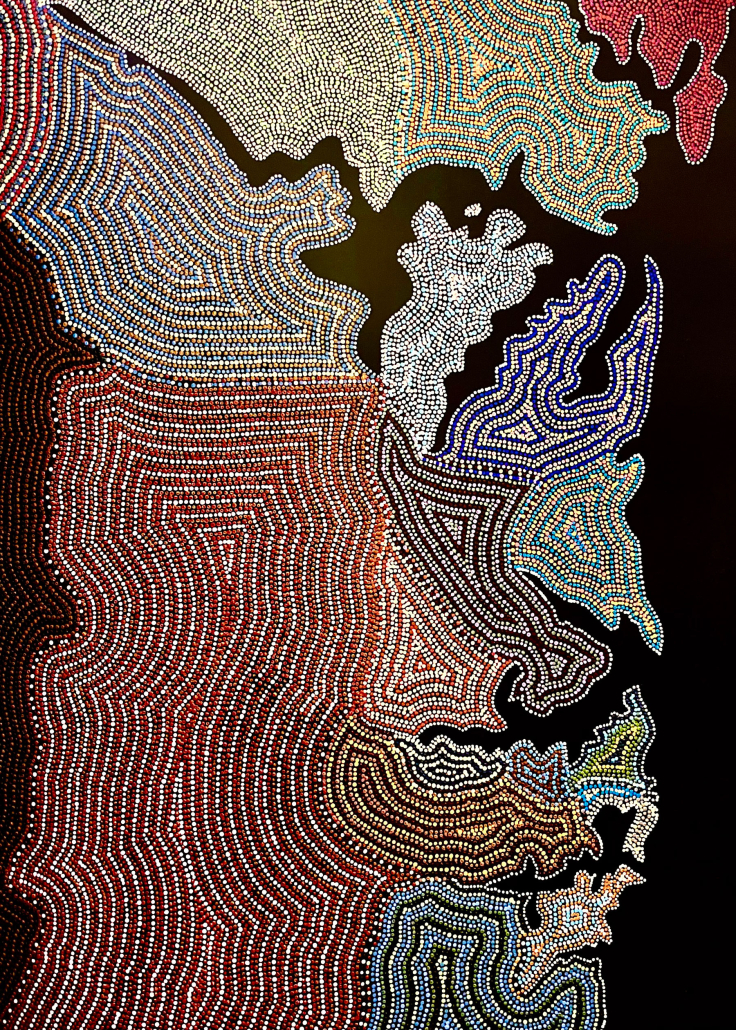
Image: ‘Ngura Lingos’ by Konstantina, polymer and acrylic on canvas, 2020. This piece, which means Country of Languages, is a cartography of sorts. It charts, based on early settler maps and accounts, the language groups that were represented and where they changed dialect across the greater Eora nation. The place we now call Sydney. Wildly talented and super smart Professor Jakelin Troy validated this demarcation of language groups in her book The Sydney Language (1994), and notes that while all people across this huge space spoke different languages or different dialects of the same language, they could indeed all communicate and comprehend one another. Isn’t that wild! (Konstantina, Gadigal Ngura, 2024, p.71).
…
Easter 4B: Teach
We will consider examples of teaching and learning in Mark’s Gospel, as well as the teaching and learning we remember, value and hope continues to form and transform us.
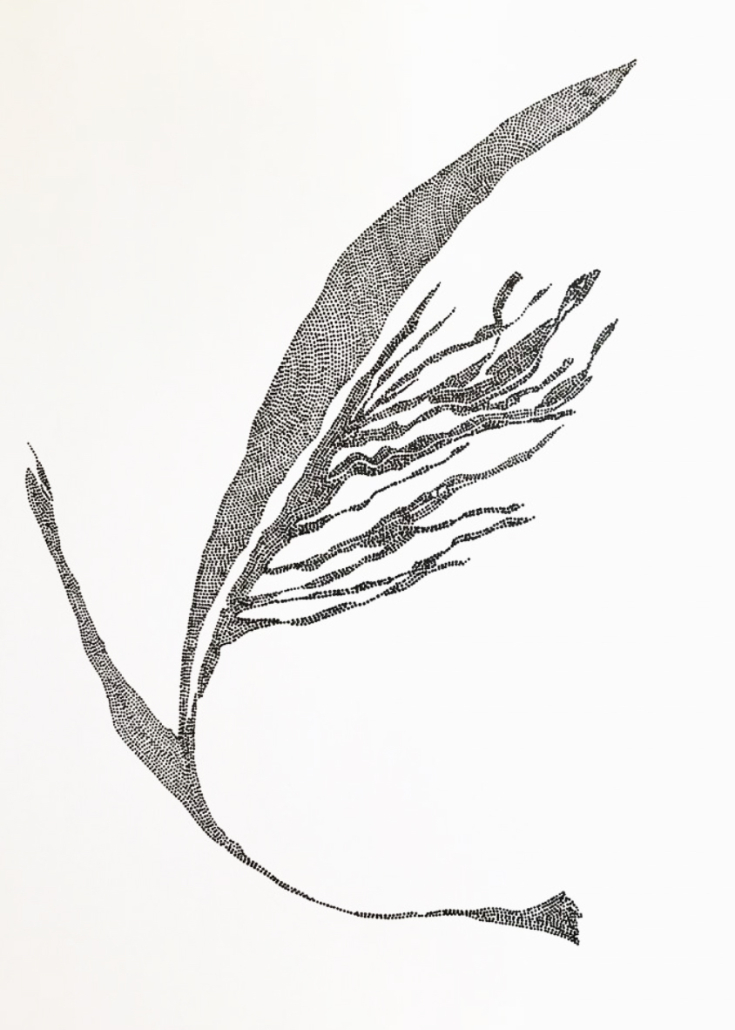
Image: ‘Negative Space: Djurali (B)’ by Konstantina, Kakadu ochre and acrylic on canvas, 2021.
Gadigal translation: New Life – literal translation ‘to grow’. For living things to grow new life, first we must mature to seed (Konstantina, Gadigal Ngura, 2024, p.130). Undeniably, the Aboriginal genius lies in the making of something from nothing (Konstantina, Gadigal Ngura, 2024, p.120).
We will consider examples of tending and caring in Mark’s gospel, as well as the compassion we remember, value and hope continues to help and heal us.
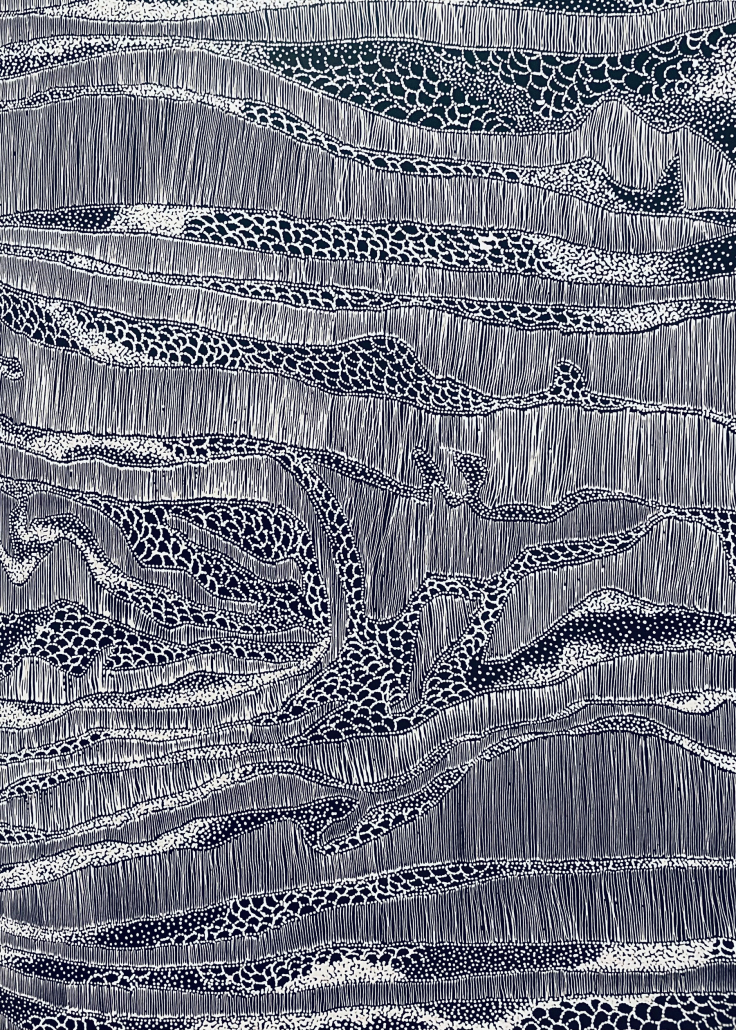
Konstantina, ‘Banarang’, 2022. Acrylic on Belgian linen, 90 x 120cm.
Gadigal translation: Bloodline
“We come from the smallest kinship since the Colonial inception. It’s academically argued that all Gadigal people derive from three people. I’m not sure I believe this, but it goes to show how few our numbers dwindled down to.
“In spite of such a small kinship, we are mudung (brave). Showing up is mudung in a world that doesn’t want us to identify, speaking up is mudung in a world that doesn’t want to acknowledge and apologise for the wrongs it has done, and saying NO is mudung” (Konstantina, Gadigal Ngura, 2024, p. 70).

